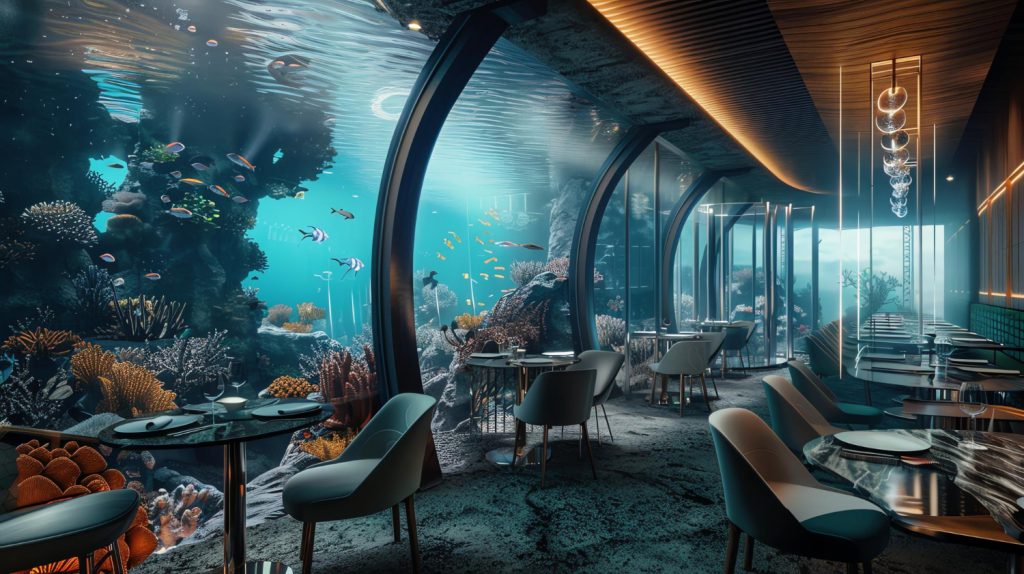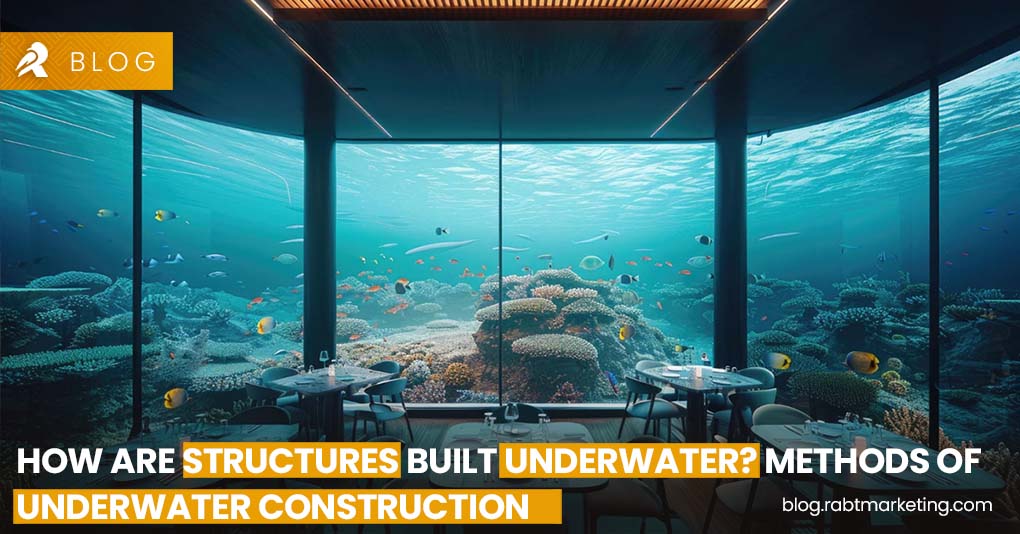Underwater construction is a new trend and innovation in the construction industry since the last few decades. Underwater construction involves creating structures beneath the water’s surface, like bridges, dams, and pipelines. These projects are essential for linking communities, supporting transportation, and utilizing marine resources. Mastering engineering methods for underwater construction is the key due to the demanding setting it presents. Engineers ate the real heroes behind the architectural complications and structural stability of underwater structures. Engineers face distinct challenges, such as managing water pressure, limited visibility, and material corrosion, requiring specialized expertise and equipment.
Methods of UnderWater Construction

By exploring the methods and technologies applied in underwater construction, we gain insight into the creative solutions engineers employ to address these obstacles. This guide covers various underwater construction techniques, including caissons, cofferdams, and driven piles, illuminating the captivating world of marine engineering.
Installing Guide Piles in Underwater Construction
The initial step in building a cofferdam begins with installing guide piles using specialised equipment like pile-driving hammers. These guide piles lay the groundwork for the remaining construction steps.
Pile Driving Hammer
The pile-driving hammer is essential for embedding the guide piles into the seabed. Powered by hydraulic mechanisms, this machine delivers the force required to penetrate the ocean floor, establishing a reliable base for the construction project.
Setting Up Sheet Piles
After installing guide piles, engineers continue by driving sheet piles into the seabed. These sheet piles, equipped with interlocking features, ensure structural cohesion and stability throughout the construction phase.
Techniques for Sheet Pile Installation
To drive sheet piles effectively, engineers use innovative techniques. One method involves vibrations generated by the pile-driving hammer, which enhances the sheet pile’s embedment depth, reinforcing overall stability.
Tackling Water Pressure Issues in Underwater Construction
A primary challenge in underwater construction is the considerable water pressure exerted on structures like cofferdams. Engineers devise solutions to counterbalance this pressure and avoid structural failure.
Bracing Frame Structure
To prevent collapse due to water pressure, engineers construct a bracing frame alongside the sheet piles. This additional support bolsters the cofferdam’s stability, even against strong external forces.
Case Study: Cofferdam at Bridge Site X
- Location: Bridge Site X, Coastal Region
- Project Description: Engineers successfully constructed a cofferdam to support bridge pier construction in a coastal area with intense water pressure and a soft seabed.
- Challenges: High water pressure and a soft seabed.
- Solutions: Bracing frame support and concrete seal course.
- Outcome: Successful bridge pier construction with enhanced stability and durability of underwater structures.
Preventing Water Seepage
Water infiltration is a significant threat in underwater construction, potentially jeopardising structural stability. Engineers apply various techniques to block water ingress and maintain structural integrity.
Concrete Seal Course
To prevent water seepage, engineers use the concrete seal course technique. This method involves removing soil above the hard layer and applying a seal course directly to the bedrock, creating a watertight barrier.
Building Bridge Piers in Underwater Construction
Underwater construction also includes the assembly of bridge piers to support infrastructure like bridges. Engineers employ advanced construction methods to create sturdy, lasting bridge piers fit for underwater conditions.
Reinforcement Bar Assembly
Bridge pier construction starts with arranging high-strength reinforcement bars to provide structural support, ensuring the pier’s stability against water currents and other forces.
Pouring Concrete
Once reinforcement is in place, concrete is poured into the formwork, encapsulating the reinforcement to form the bridge pier’s solid structure. Special concrete mixes enhance durability and corrosion resistance in underwater conditions.
This section provides a deeper look at the methodologies and technologies engineers use to address underwater construction’s complexities.
Water Removal and U-Shaped Pattern Formation
As water is pumped out from the cofferdam, a U-shaped pattern may form due to the sequential withdrawal. Engineers use specific techniques to manage this effect during construction.
Water Removal Techniques
Specialized equipment, such as water pumps and drainage systems, enable efficient water removal from the cofferdam, aiding the construction process.
Concrete Seal Course Technique in Underwater Construction
To prevent seepage and preserve the cofferdam’s integrity, engineers apply a concrete seal course. This technique uses precise methods to apply concrete on the hard layer, blocking water entry.
Soil Excavation
Using clamshell buckets, engineers excavate soil above the hard layer to create a foundation for the concrete seal course.
Installing Hollow Steel Piles
After soil excavation, hollow steel piles are driven into the bedrock to provide structural support for the cofferdam.
Placement of Reinforcement Bars
Reinforcement bars are carefully positioned within the hollow steel piles, enhancing structural stability and durability.
Applying the Concrete Seal Course
Once hollow steel piles are installed, engineers pour concrete into the hollow section, creating a solid seal with the bedrock.
Concrete Seal Course Composition
High-strength concrete mixes, specially designed for underwater use, enhance durability and resistance against water infiltration.
Unique Challenges in Underwater Construction
Underwater construction presents various obstacles, including:
- High water pressure changes
- Unstable seabeds
- Corrosive marine environments
Managing Water Pressure Changes
Engineers must develop solutions to withstand fluctuating water pressures, ensuring underwater structures remain stable.
Addressing Unstable Seabeds
Soft and unstable seabeds create challenges, requiring careful planning and reinforcement to avoid structural issues.
Best Examples of Underwater Construction in the World
Let us discuss a few marvelous masterpieces of underwater constructions in the world.
- Ithaa Undersea Restaurant, Maldives
- Jules Undersea Lodge, United States
- Subsix, Niyama Island, Maldives
- Under, Norway
- Atlantis Sanya Resort, China
- Floating Seahorse Villa
If you are interested to read more about underwater structures, click here.
Some Final Thoughts
Underwater construction calls for careful planning, creativity, and advanced engineering techniques to overcome the hurdles of submerged environments. Expert Engineers and specialised technologies build vital infrastructure like cofferdams, which strengthens connectivity and development in coastal areas.

